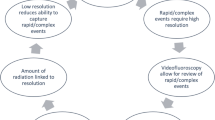Abstract
The aim of study is to verify the aptitude of urodynamists to carry out an objective description of uroflowmetric parameters and to formulate a diagnostic suspicion by using merely the visual interpretation of uroflowmetry curves. An anonymous questionnaire including ten uroflowmetry curves was administered to urologists participating in the XXVI Congress of the Italian Society of Urodynamics (SIUD). To evaluate the accuracy in the description of uroflowmetry pattern, we asked to classify as “normal” or “abnormal” all uroflowmetry parameters; to assess the capability to outline a diagnostic suspicion, we requested to choose one out of six possible diagnoses. Inter- and intraobserver agreements were calculated. We overall recruited 105 questionnaires out of 300 urologists attending the SIUD Congress. Substantial interobserver agreement was obtained for maximum flow rate, average flow rate, flow time, and voiding time (K = 0.79, 0.79, 0.77, and 0.72), whereas substantial intraobserver agreements were evidenced for maximum flow rate and flow time (K = 0.70 and 0.63). We noted substantial agreement for the “No abnormalities” diagnosis (K = 0.72), fair agreement for “Urethral stricture” (K = 0.30), and slight agreement for both “Benign prostatic obstruction” and “Bladder outflow obstruction” (K = 0.17 and 0.20); moreover, we reported a moderate intraobserver agreement (K = 0.05) on diagnostic suspicion. Maximum flow rate, average flow rate, flow time, and voiding time are properly assessed by the large part of urodynamists. Flow curves from healthy men or from patients with urethral stricture or benign prostatic obstruction are easily recognizable. Long experience and daily practice may make the difference in the assessment of uroflowmetry curves.


Similar content being viewed by others
References
Tripathi VNP, Sridhar M (1983) Urodiagrams: a new method of uroflow pattern analysis. J Urol 130:309–311
Rowan D, McKenzie AL, McNee SG (1997)A technical and clinical evaluation of the DISA uroflowmeter. Br J Urol 49:285–293
De La Rosette JMCH, Witjes WPJ, et al (1996) Improved reliability investigations: results of a portable home-based uroflowmetry study. Br J Urol 78:385–390
Matzkin H, van der Zwaag R, Chen Y, et al (1993) How reliable is a single measurement of urinary flow in the diagnosis of obstruction in benign prostatic hyperplasia? Br J Urol 72:181–186
Golomb J, Lindner A, Siegel Y, et al (1992) Variability and circadian changes in home uroflowmetry in patients with benign prostatic hyperplasia compared to normal control. J Urol 147:1044–1047
Jorgensen JB, Mortensen T, Hummelmose T, et al (1993) Mechanical versus visual evaluation of urinary flow curves and patterns. Urol Int 51(1):15–18
Grino PB, Bruskewitz R, Blaivas JG, et al (1993) Maximum urinary flow rate by uroflometry: automatic or visual interpretation. J Urol 149:339–341
Landis JR, Koch GG (1977) The measurement of observer agreement for categorial data. Biometrics 33(1):159–174
Drach GW, Binard B (1976) Disposable peak urinary flowmeter estimates lower urinary tract obstruction. J Urol 115:175–179
Rollema HJ, Griffiths DJ, van Duyl WA, et al (1997) Flow rate versus bladder volume: an alternative way of presenting some features of the micturition of healthy males. Urol Int 32:401–412
Drach GW, Layton TN, Binard WJ (1978) Male peak urinary flow rate: relationships to volume voided and age. J Urol 122:210–214
Marshall VR, Ryall RI, Austin ML, et al (1983) The use of urinary flow rate obtained from voided volumes less than 150 ml in the assessment of voiding ability. Br J Urol 55:29–33
Shafer W, Abrams P, Liao L, et al (2002) Good urodynamic practice: uroflowmetry, filling cystometry and pressure-flow studies. Neurourol Urodyn 21:261–274
Drake WM Jr (1954) The uroflowmetry in the study of bladder neck obstruction. JAMA 156:1079–1080
Haylen BT, Ashby D, Sutherst JR, et al (1989) Maximum and average urine flow rates in normal male and female populations—the liverpool nomograms. Br J Urol 64:30–38
Author information
Authors and Affiliations
Corresponding author
Rights and permissions
About this article
Cite this article
Gacci, M., Del Popolo, G., Artibani, W. et al. Visual assessment of uroflowmetry curves: description and interpretation by urodynamists. World J Urol 25, 333–337 (2007). https://doi.org/10.1007/s00345-007-0165-8
Received:
Accepted:
Published:
Issue Date:
DOI: https://doi.org/10.1007/s00345-007-0165-8




